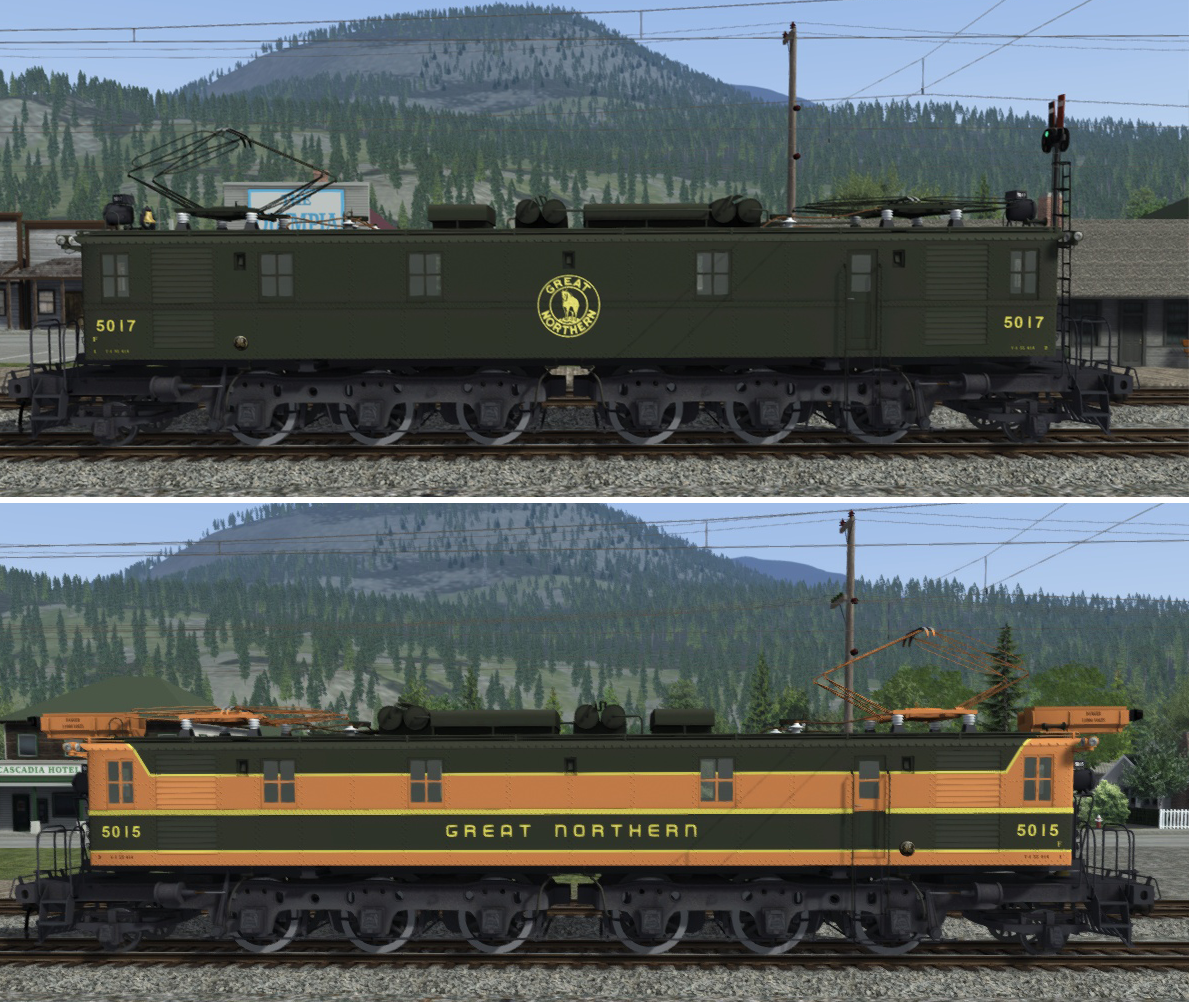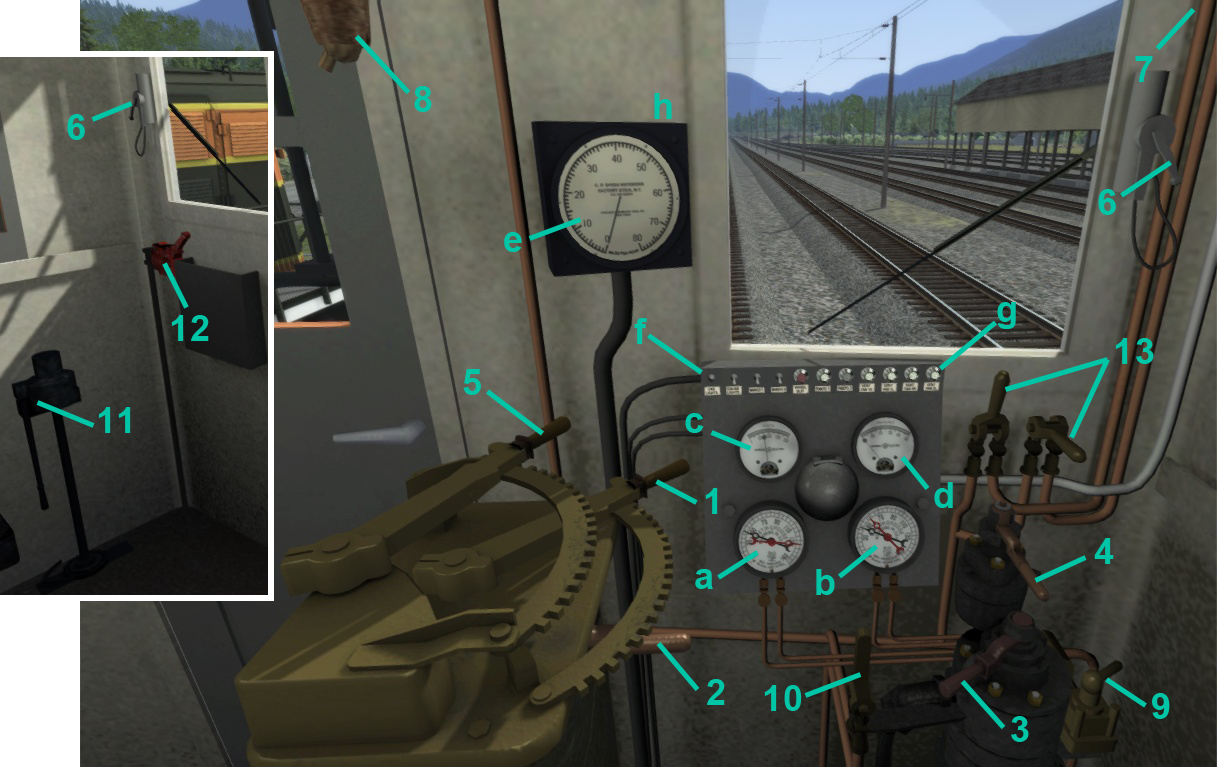About the Route
The Cascadian route for Train Simulator is a backdated version of the popular Stevens Pass route which was originally released in 2013. Both the Cascadian and Stevens Pass were developed by the same team of railroad simulation enthusiasts: Jim Friedland, Michael Stephan and Rick Grout. While the Stevens Pass route depicts present-day operations on BNSF’s Scenic Subdivision, the target era of the Cascadian route ranges from 1929 to 1956, so there’s a lot more operational flexibility. You can operate steam, electric or diesel locomotives on the route, as would be appropriate for the date specified in the scenario you’re running. If you opt for the earlier end of the target era, you will probably want to take the original route through Tumwater Canyon and cross the Cascades via the original, shorter tunnel. In the later years it's more likely you will follow the shorter, modern-day route through Chumstick Canyon and the new, longer tunnel. Just remember, neither tunnel at the time had been equipped with a ventilation system, ruling out the passage of diesel- or steam-only trains. It's perfectly all right to use the powerful Y-1 electrics to haul such trains along either route—and through the tunnels—because that's exactly what the Great Northern did!
There are also plenty of opportunities to operate "short line" scenarios, running smaller freight and passenger trains between the numerous local industries and flag stops.
Route Map
The Cascadian route includes all the tracks shown below.

History
The Great Northern Railway completed its link to the Puget Sound port of Seattle in 1893. Originally, the track alignment required trains to negotiate a treacherous series of switchbacks to make the crossing over Washington's Cascade Mountains. A few years later, in 1900, the first Cascade Tunnel opened and the switchbacks were eliminated. The tunnel, at 2.6 miles (4.2 km) in length, made the journey less subject to severe winter weather. Due to fume problems from the coal-burning steam locomotives used in those days, the railroad decided to electrify the stretch between the towns of Wellington and Cascade at the opposite ends of the tunnel, and the electrification project was completed in 1909. Steam trains arriving at the tunnel would have their fires banked off or dumped, and electric locomotives would haul the train to the other end of the tunnel where steam power could be restored. Electricity was supplied at 6,600 Volts by a new 5 MW hydroelectric plant located next to the original right-of-way, alongside the Wenatchee River in narrow, winding Tumwater Canyon, just west of Leavenworth. The power supply was three-phase AC, an early design that required two overhead contact wires.
Unfortunately, the tunnel area continued to be plagued by snow slides. In 1910, an avalanche at Wellington (renamed "Tye" after the incident) killed an estimated 100 people. It was the deadliest avalanche disaster in US history, and it prompted the construction of a new, longer tunnel at a lower elevation. Upon completion of the new, 7.8-mile-long (12.6 km) Cascade Tunnel in 1929, portions of the railroad between Leavenworth and Scenic were realigned to the present-day right of way. That year also saw the extension of the electric catenary system along the 73-miles (117km) of trackage between Skykomish and Appleyard in Wenatchee—this time with a more modern 11,000 Volt, single-phase AC system.
A mechanical ventilation system was installed at the east end of Cascade Tunnel in 1956, thereby allowing the tunnel to be used by diesel locomotives. This eliminated the need for the electric helper locomotives, and electrification was removed that same year.
In 1970 the Great Northern Railway became part of what today is the BNSF Railway.
Locomotives and Rolling Stock
Class Y-1 Electric

The Y-1 was an AAR 1-C+C-1 electric locomotive, of which eight were built for the Great Northern Railway between 1927 and 1930 and numbered 5010-5017. The locomotives were assembled at Schenectady, New York, with car bodies manufactured by American Locomotive Company and electrical components by General Electric. They used motor-generator sets to rectify the 11,000 Volt AC line voltage to 750 Volt DC for the traction motors. The locomotives saw service on the electrified portion of the Great Northern from Wenatchee to Skykomish, including the Cascade Tunnel, in Washington State.
In the mid-1930s, GN modified the locomotives by adding an overhead 11,000 Volt bus bar to electrically connect locomotives operating in multiples. This was done as a safety measure to avoid the need for work crews to handle high-voltage MU connectors. In order to accommodate this change, the headlights were moved from the roof to the front of the cabs and the bells were moved beneath the cab-entry platforms. Later, in the 1940s, the locomotives were given their iconic Empire Builder paint scheme.
In 1956, the GN dieselized its operations, including through the Cascade Tunnel. The overhead electrical system was decommissioned, and the Y-1 locomotives were sold to the Pennsylvania Railroad, which classified them as FF2.
Cab Controls
